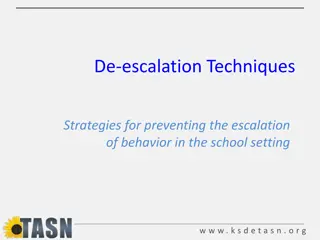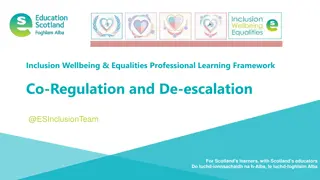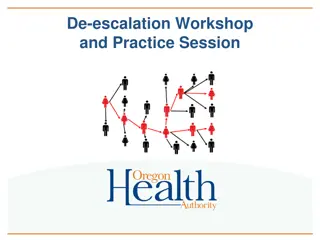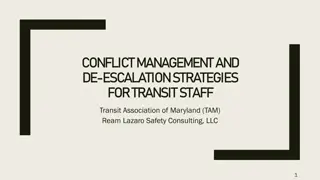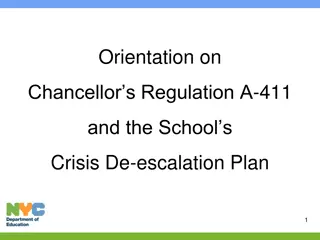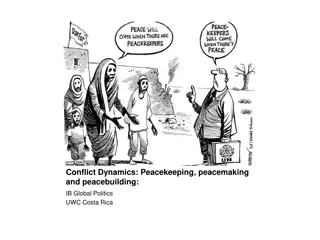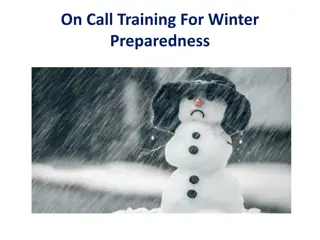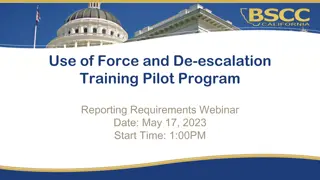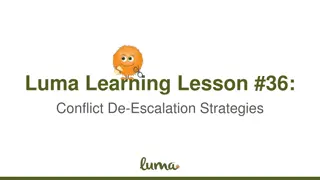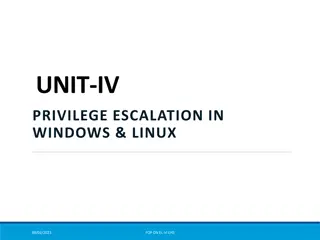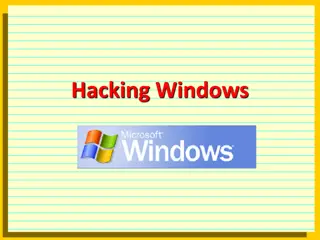Effective Ways to Handle Escalation with Your Child
Explore top 10 do's and don'ts when dealing with escalation with your child, emphasizing on maintaining composure, positive communication, and effective de-escalation techniques to handle challenging situations constructively. Learn about common escalation patterns and practical strategies to diffuse conflicts and promote a positive parent-child relationship.
Download Presentation

Please find below an Image/Link to download the presentation.
The content on the website is provided AS IS for your information and personal use only. It may not be sold, licensed, or shared on other websites without obtaining consent from the author.If you encounter any issues during the download, it is possible that the publisher has removed the file from their server.
You are allowed to download the files provided on this website for personal or commercial use, subject to the condition that they are used lawfully. All files are the property of their respective owners.
The content on the website is provided AS IS for your information and personal use only. It may not be sold, licensed, or shared on other websites without obtaining consent from the author.
E N D
Presentation Transcript
Escalation: Top 10 do s and don ts when it comes to escalation with your child: What to do: What to avoid: - React - Talk too much - Argue - Lecture - Threaten - Raise your voice - Use sarcasm - Blame - Say hurtful things - Use aggressive body language. - Stay calm - Stop and think - Remain positive - Give yourself time to plan your response - Be non-judgemental - Remind yourself you re doing the right thing - Be gentle and firm - Persist - Walk away - Believe things can get better
Parents sometimes see their children as arguing with them, making threats and expressing anger. The natural response of most parents is to try and get back in control, making threats back or demanding punishments. Different types of escalation: Joint escalation: Your child raises their voice, you raise yours, your child shouts, you start to shout, your child shouts louder, you shout louder. The argument can end in violence on both sides In most cases, this further angers the child, and is almost like throwing fuel on the fire. They get more angry, you get more angry and things continue to escalate and you end up in a battle of wills, Neither one of you wanting to back down Giving-in escalation: Your child shouts and demands, after a while you give in and let your child have their way. Your child learns that they get their own way if they make enough fuss and will repeat the pattern as often as they can. Each time this happens you set the bench mark at what point you will give in. This bench mark can get higher and higher each time. In these times, you re fighting a losing battle. Your child is always willing to go one step further than you re ever going to go. Each times you go further before giving up, the bench mark gets higher, and the line to beat goes up and up.
De-escalation Pause and postpone Pause and postpone is one of the strongest tools in a parenting toolbox. Taking the time to get your thoughts straight rather than making a rash decision is a really good way of removing the power from the child, showing them that they don t have the power to make you react in a specific way which means they get what they want. De-escalating the situation removes the power away from the child. The parent takes the lead and controls their reactions and does not allow the child to reel them in. Using phrases such as I m going to take some time to think about it followed by staying silent is a clear way of showing the child that you re independent of their control and are taking lead of the situation yourself. By staying silent and not getting into further discussion you re left with the final say. Walk away, do something to distract yourself. Notice if you ve been hooked, and take time to step off the rollercoaster. Avoid getting into lengthy discussions with your child and avoid getting into lecture mode . This is how your child will draw you into the game, a game which you will undoubtedly lose.
Wait, you want me to give up?! Youre letting them win!! Lots of parents find the idea of avoiding argument and walking away as giving up/backing down. They feel like they re reinforcing to their child that they have no power or control, it feels like their child has won. Strike when the iron is cold Addressing incidents whilst things still feel heated means there is more chance that things could explode again, and we re back to square 1 and back to de- escalation. You could go round this cycle time and time again without moving forward or seeing anything change. The concept of striking when the iron is cold is to address an incident when everything is properly calm. This could even be days after the incident has happened! It gives you and your child space to think about what has happened, and when you do come to talk about it, you re able to be much more rational and reasonable. There s less chance that things will explode again as you re not feeling angry, and the chance of being able to address what happened and come up with a plan is much higher. There is much more chance that your child will engage. By walking away, you re in control Your child sees escalation as a game. I shout, you shout and we go on until you back down and I win and get what I want. By taking away your role in this, we don t get to a point where the child wins I shout, you walk away . and the escalation ends. The important part is addressing the incident when things are calm.


